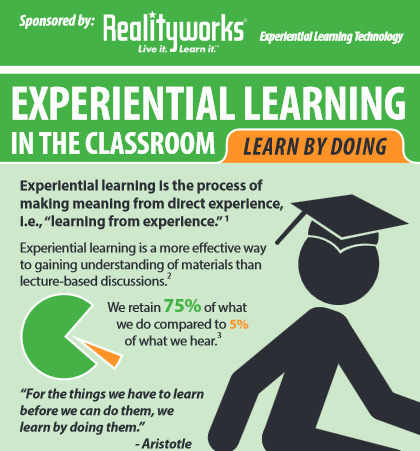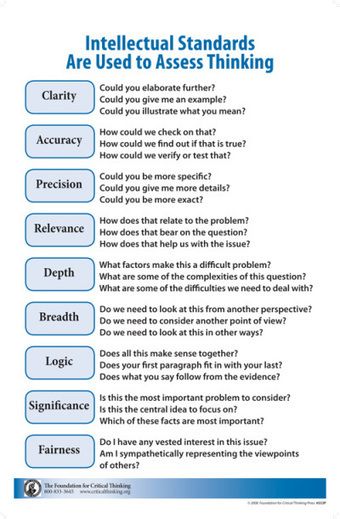Get Started for FREE
Sign up with Facebook Sign up with X
I don't have a Facebook or a X account
 Your new post is loading... Your new post is loading...
 Your new post is loading... Your new post is loading...
|
Beth Dichter's curator insight,
February 9, 2015 8:27 AM
Teaching student to think...we know this is not as easy as it sounds. This post suggests looking at this through the lens of the visual displayed above (which comes from The Foundation for Critical Thinking) and recommends that you use three simple steps (quoted from post): 1) TELL students that you want them to work on their thinking. 2) Choose ONE element of thought, intellectual standard, or intellectual trait and teach students what it means. 3) Give students something to think about and ask them to practice improving their thinking. Each of these ideas are discussed in the post and suggestions are provided to help you implement this in the classroom. On Feb. 4, 2015 I posted an article "The Question Game: A Playful Way to Teach Students to Think" and a number of people have responded to it. This post provides some additional ways to teach students to think and many of them are playful also. If one of your goals in teaching is to help students gain this skill take the time to read this post. 
Charles Fischer's curator insight,
February 11, 2015 7:56 AM
A few great ideas for critical thinking. I particularly liked the activity called "telephone" (not the listening game). Teachers can use all the strategies they can to help their students think better! |












Career and Technical Education programs (often called vocational schools) have their students learn by doing. Learning by doing is known as experiential learning. Why is experiential learning beneficial? Below are the three reasons described in this post.
Reason 1: Experiential education promotes positive attitudes towards learning.
Reason 2: Experiential education provides true-to-life experience that enhances career exploration.
Reason 3: Experiential education helps create more engaged members of the workforce.
Each of these reasons is discussed in the post. There is also an excellent infographic, Experiential Learning in the Classroom: Learn by Doing.